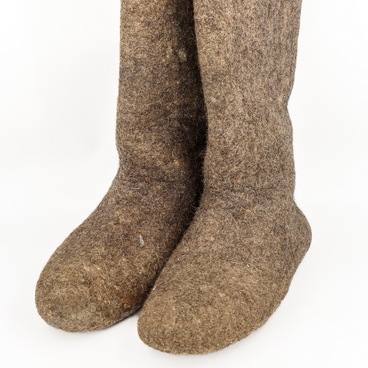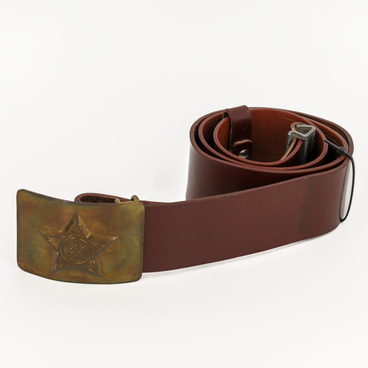The first shoulder boards, shoulder-worn insignia on uniforms, appeared in Russia during the time of Peter I. Those were worn by fusiliers (infantrymen armed with rifles) and grenadiers with a purely utilitarian purpose: to hold the shoulder straps of a haversack. It was this purpose of the shoulder board that predetermined its location and shape. In the cavalry, neither officers nor soldiers had shoulder boards. Quite soon, shoulder boards began to be used as a decorative element of clothing.
By 1762, the shoulder boards had acquired another function: their coloring was now used to identify the soldier’s affiliation with a particular regiment. Officers and soldiers of one regiment began to be identified by sailing cord weaving of the shoulder board. There were so many types of weaving (determined by discretion of each unit commander) that it turned out to be impossible to remember all of them.
Emperor Paul I returned to shoulder boards their purely practical purpose — to secure the strap. The shoulder insignia once again disappeared from the uniform of the officers. On the other hand, officers and generals now had an aglet on their right shoulder — a gilded or silver cord, the upper part of which closely resembled a worsted shoulder board.
Under Alexander I, the importance of shoulder boards rose. Since 1802, the colors of the insignia were clearly regulated depending on the number of the regiment in the division. The officers also received a shoulder board sheathed along the edge with gold braid, on the right shoulder. With the introduction of a knapsack worn behind the back (until the early 19th century, soldiers had carried a single-strap haversack), there were two shoulder boards — on both shoulders. The officers’ shoulder boards were replaced with epaulettes, but half a century later they became part of the uniform yet again.
Shoulder boards in the Russian army existed until the October Revolution. During the years of the civil war, in most of the armed formations of the White movement, shoulder boards were preserved. In the Red Army, their functions were performed by sleeve insignia, later by collar patches. The Bolsheviks rejected shoulder boards as symbols of the old regime, tsarist Russia, as the embodiment of “unequal rights of the working people and the exploiting classes.”
Shoulder boards were brought back to Soviet military uniforms in January 1943 for ideological reasons, as a symbol of continuity of the country’s military history. It is no coincidence that the type of shoulder boards and the placement of insignia on them was similar to the shoulder boards of the pre-revolutionary Russian army. Another possible reason was an attempt to unify the military ranks with those of the allied countries.
In the post-war period, a series of shoulder board reforms took place in the Armed Forces of the USSR, yet no fundamental changes were made. In today’s Russian army, shoulder boards have been preserved in their original form.
By 1762, the shoulder boards had acquired another function: their coloring was now used to identify the soldier’s affiliation with a particular regiment. Officers and soldiers of one regiment began to be identified by sailing cord weaving of the shoulder board. There were so many types of weaving (determined by discretion of each unit commander) that it turned out to be impossible to remember all of them.
Emperor Paul I returned to shoulder boards their purely practical purpose — to secure the strap. The shoulder insignia once again disappeared from the uniform of the officers. On the other hand, officers and generals now had an aglet on their right shoulder — a gilded or silver cord, the upper part of which closely resembled a worsted shoulder board.
Under Alexander I, the importance of shoulder boards rose. Since 1802, the colors of the insignia were clearly regulated depending on the number of the regiment in the division. The officers also received a shoulder board sheathed along the edge with gold braid, on the right shoulder. With the introduction of a knapsack worn behind the back (until the early 19th century, soldiers had carried a single-strap haversack), there were two shoulder boards — on both shoulders. The officers’ shoulder boards were replaced with epaulettes, but half a century later they became part of the uniform yet again.
Shoulder boards in the Russian army existed until the October Revolution. During the years of the civil war, in most of the armed formations of the White movement, shoulder boards were preserved. In the Red Army, their functions were performed by sleeve insignia, later by collar patches. The Bolsheviks rejected shoulder boards as symbols of the old regime, tsarist Russia, as the embodiment of “unequal rights of the working people and the exploiting classes.”
Shoulder boards were brought back to Soviet military uniforms in January 1943 for ideological reasons, as a symbol of continuity of the country’s military history. It is no coincidence that the type of shoulder boards and the placement of insignia on them was similar to the shoulder boards of the pre-revolutionary Russian army. Another possible reason was an attempt to unify the military ranks with those of the allied countries.
In the post-war period, a series of shoulder board reforms took place in the Armed Forces of the USSR, yet no fundamental changes were made. In today’s Russian army, shoulder boards have been preserved in their original form.



